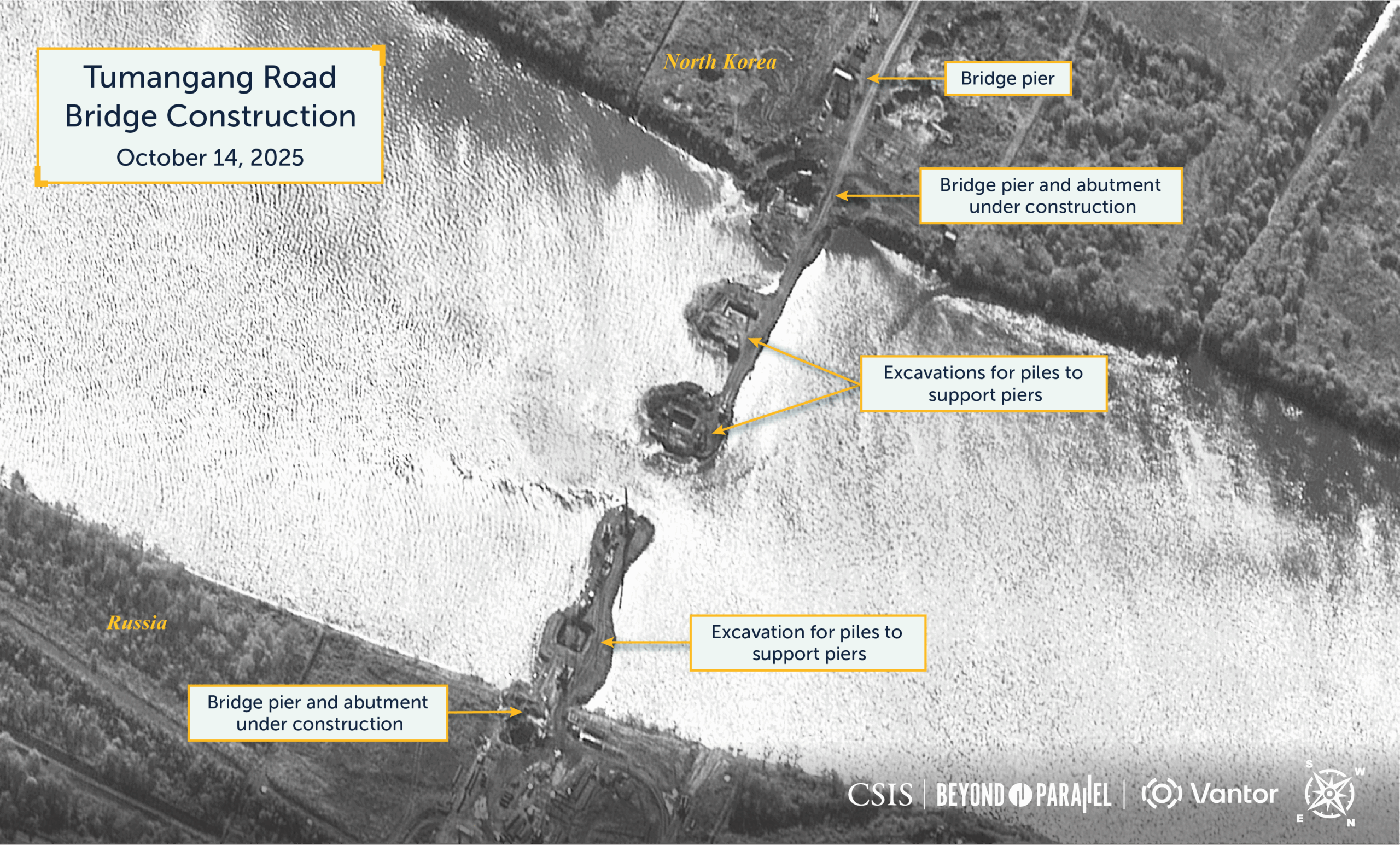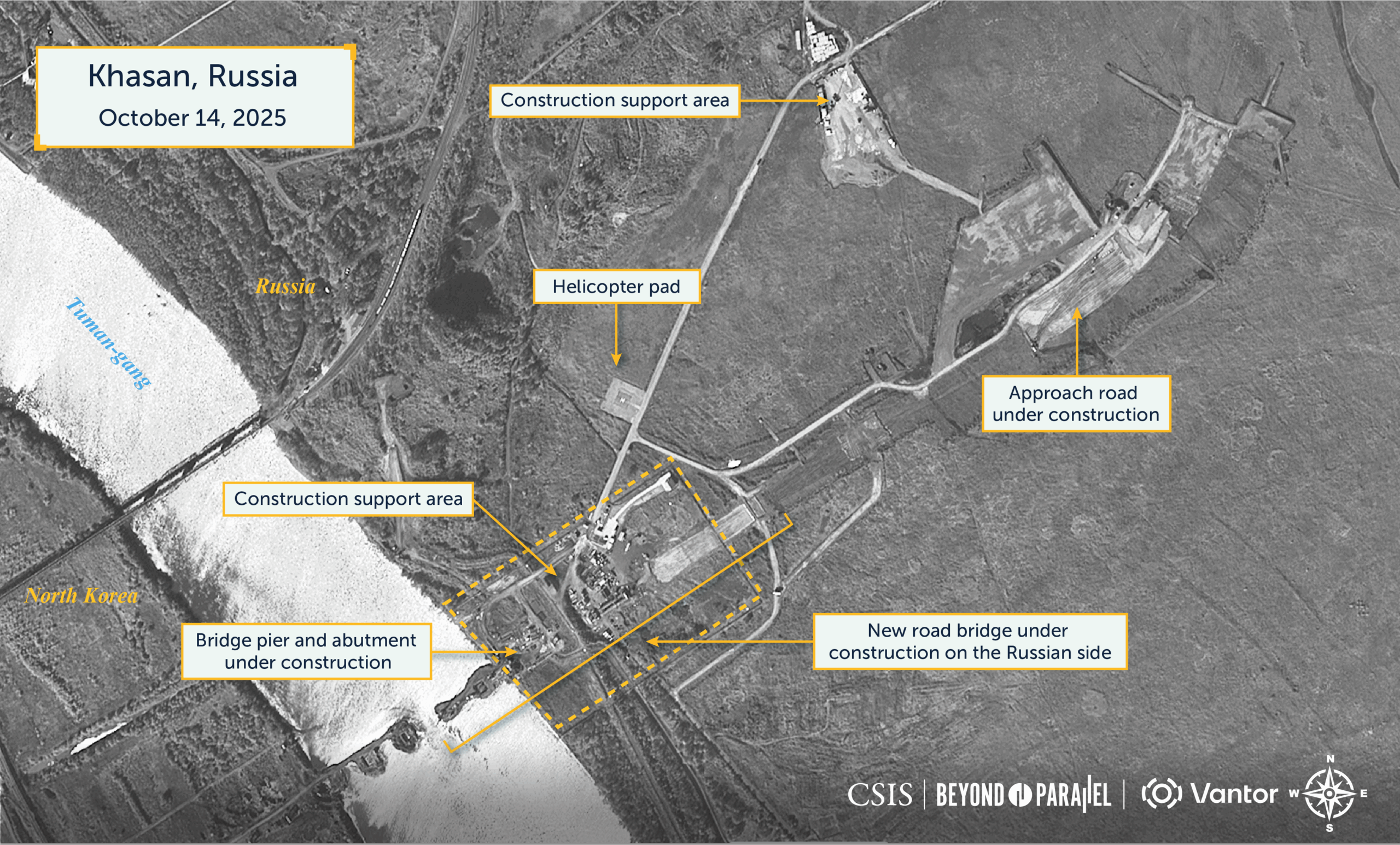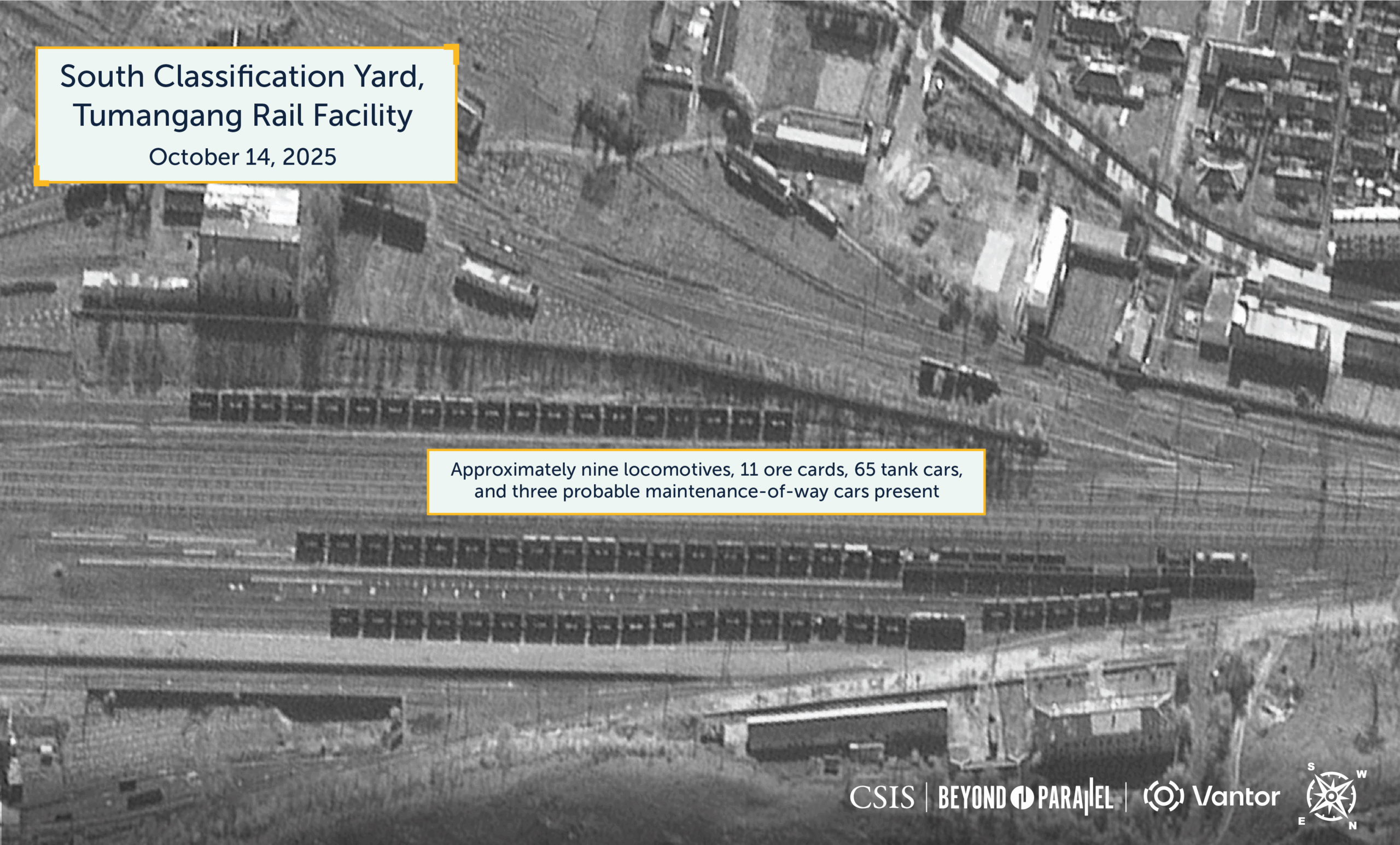
Significant Progress of the North Korea-Russia Road Bridge

Key Findings
- Construction of the new Russia-North Korea Tumangang-Khasan road bridge has made significant progress in the past six months.
- The bridge and its supporting infrastructure should be open during the first quarter of 2026, depending on the resources committed to the project and the severity of the upcoming winter.
- The speed at which the road bridge construction is proceeding and the continued high level of rail traffic in the previously dormant classification yards between the nations are clear indications of the importance of and expansion of trade between both countries during Russia’s ongoing war with Ukraine.
- On the North Korean side of the river, a new port of entry facility covering approximately five square kilometers is under construction.
- North Korea has extended its construction work approximately 150 meters into the Tuman-gang and completed the excavations for two piles for support piers. On land, it has erected six bridge piers and is nearing completion of the approach ramp and bridge abutment.
- Russia has extended its construction approximately 110 meters into the Tuman-gang, completing excavation for one pile to support a bridge pier, and is currently working on the second excavation. On land, three bridge piers have been erected, and work continues on the approach ramp and bridge abutment.
A satellite image collected on October 14, 2025, shows significant progress in the construction of the new Russia-North Korea Tumangang road bridge since our April 2025 report. Including the approach ramps on both sides, the completed bridge will measure at least 1.3 kilometers long. Concurrent with this progress, rail traffic between the two nations remains high—an indication of the ongoing importance and expansion of trade between the two countries during Russia’s war with Ukraine. Given the current rate of construction, the continued dedication of resources to the project by both nations, and the severity of the upcoming winter, the bridge and its supporting infrastructure are likely to be completed and opened during the first quarter of 2026.

The size and layout of the new road bridge and its infrastructure on both sides of the Tuman-gang indicate that both countries anticipate this route will become an important component of increased trade between the two, in addition to the existing trade via rail.
On the North Korean side of the river, a new port of entry facility covering approximately five square kilometers is under construction. This facility currently consists of six buildings, including what appears to be a customs house, warehouse, motor vehicle maintenance facility, and several support buildings. Surrounding these buildings is a large parking area that will likely serve as a truck transfer facility. Russian and North Korean truck drivers will likely be expected to exchange driving responsibilities here, as they will be restricted from operating vehicles deeper into each other’s territories. This arrangement is similar in operational concept to the port of entry at the Wonjong-ni to Quanhe Border Crossing with China, located approximately 20 kilometers to the northwest. Road traffic exiting the North Korean port of entry will likely follow the rail lines from the Tumangang rail facility through Sonbong, Najin (Rason), and to Chongjin.



As of October 14, 2025, North Korea has extended its construction approximately 150 meters into the Tuman-gang and completed excavations for two support piers. On land, it has erected six bridge piers and is nearing completion of the approach ramp and bridge abutment. To support the construction of the bridge and port of entry, North Korea has also established a temporary aggregate plant approximately 350 meters north of the approach ramp.

On the Russian side of the river, the construction site is approximately nine square kilometers, encompassing both the primary construction area and a construction support area. A helicopter landing pad, likely for use by high-priority passengers, is located approximately 300 meters to the north.

Russia has extended its construction approximately 110 meters into the Tuman-gang, completing excavation for one pile to support a bridge pier, and is currently working on the second excavation. On land, three bridge piers have been erected, and work continues on the approach ramp and bridge abutment. To support this construction, Russia has established a large construction support area with a temporary batch plant approximately one kilometer to the north of the bridge site and has begun excavating a new right-of-way from the existing highway serving Khasan to the new road bridge site. This right-of-way runs east around the Khasan rail facilities and currently extends approximately 1.9 kilometers from the bridge site. At present, it is unclear where Russia will locate its port of entry.
In addition to all the construction progress, the October 14, 2025, satellite image shows continued high levels of rail activity between the two nations, with a freight train traveling from Khasan to Tumangang. The train consists of two locomotives, eight freight cars, one gondola, and three tank cars. Within the south classification yard at the Tumangang rail facility, there are nine locomotives, eleven ore cars, sixty-five tank cars, and three probable maintenance-of-way cars present. This level of activity clearly indicates the continued importance and expansion of trade between the two countries during Russia’s war with Ukraine. Barring unforeseen events, this level of trade will likely remain high even after the opening of the new road bridge.


